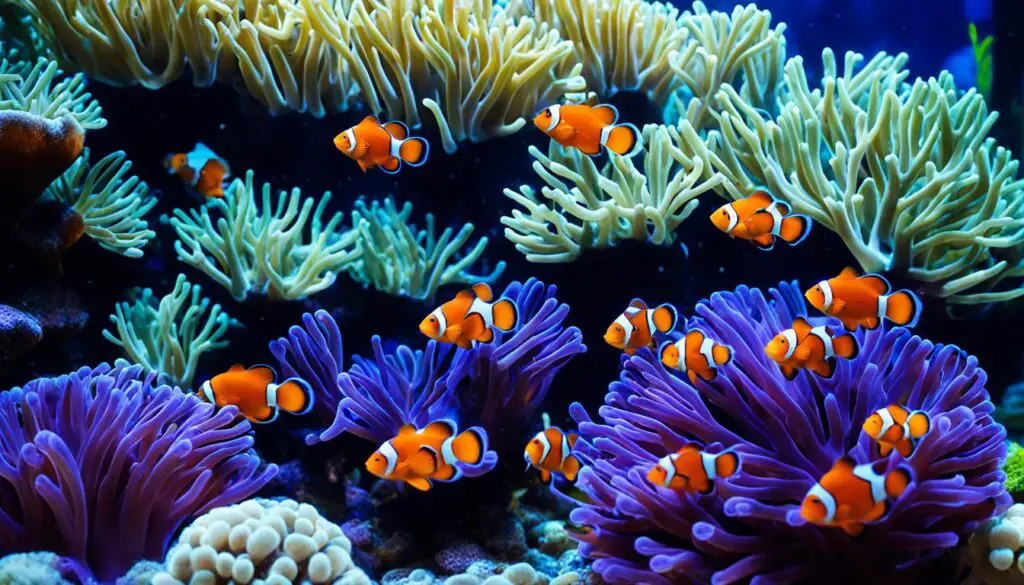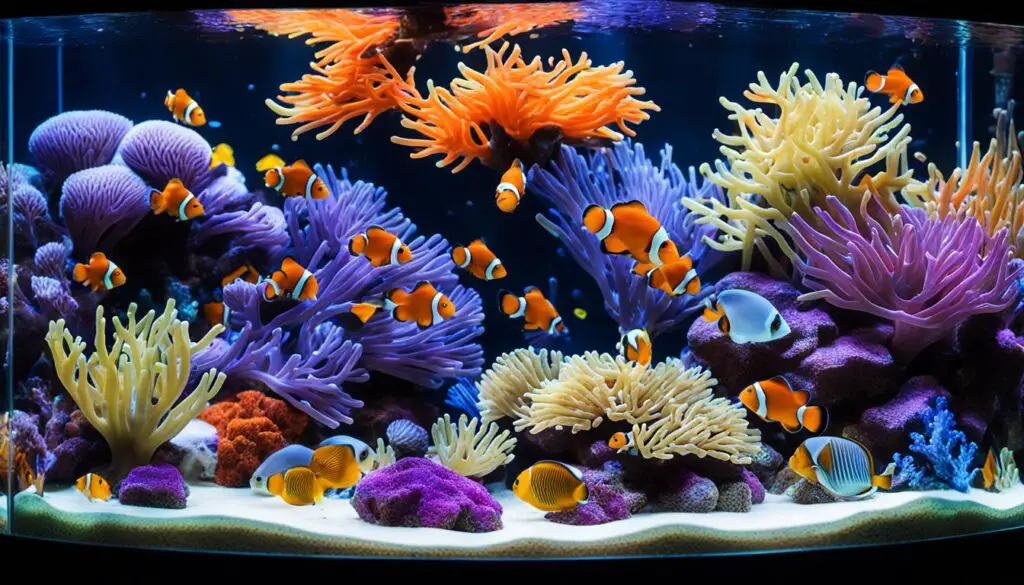Do Octopus Have Gills
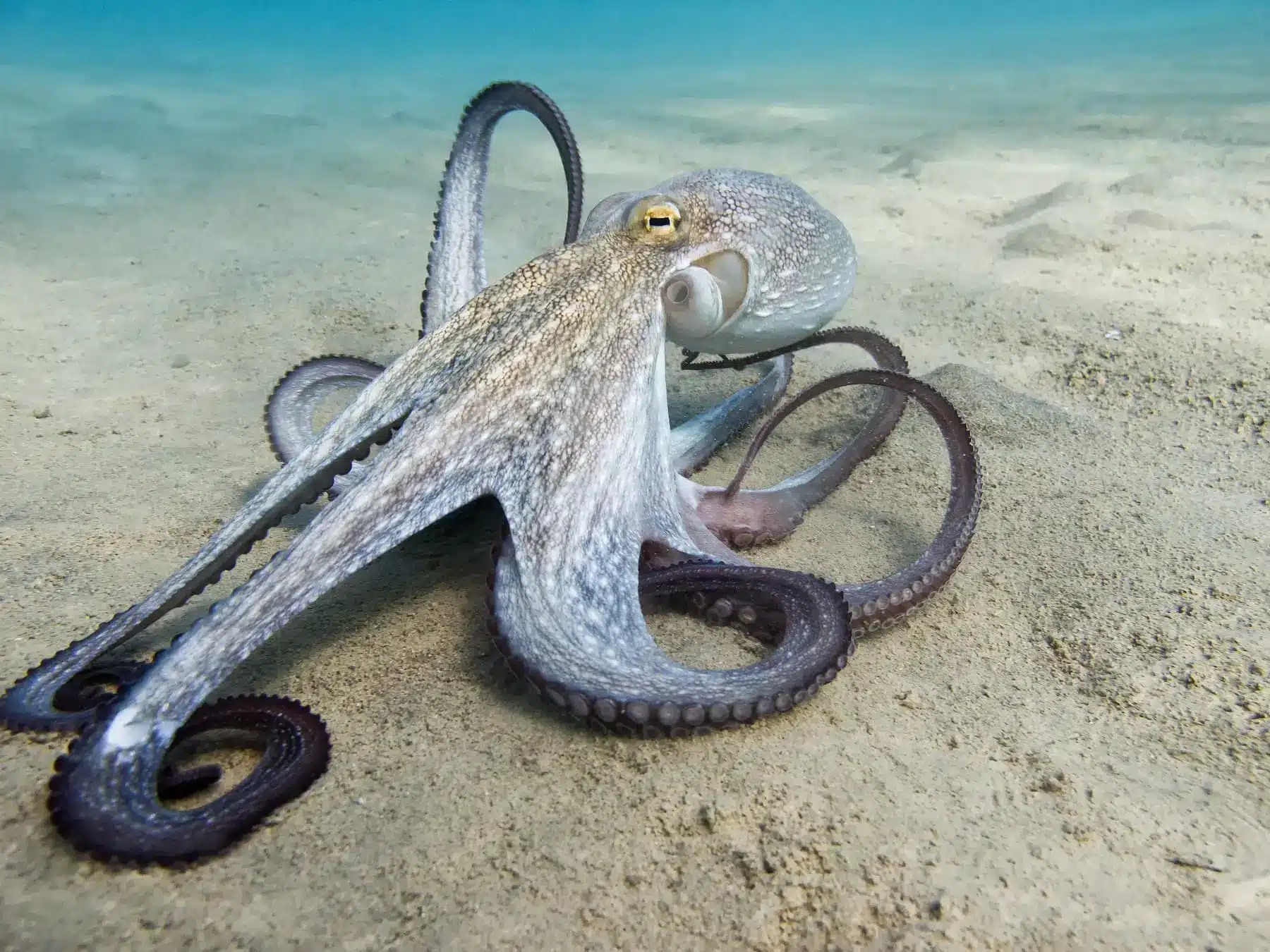
Introduction
Do Octopus Have Gills: Octopuses are mesmerizing and enigmatic creatures that inhabit the depths of our oceans, captivating the imagination of marine enthusiasts and scientists alike. One of the intriguing aspects of octopus biology is their method of respiration.
To answer this question, we must delve into the intricate biology of octopuses and their remarkable adaptations to underwater life. Unlike fish, octopuses are not classified as vertebrates; they belong to the class Cephalopoda, which also includes squids and cuttlefish. These creatures possess a range of extraordinary features, including highly developed intelligence and the ability to change color and texture at will.
The exploration of octopus respiration provides a unique window into their evolutionary history and survival strategies. Understanding how they obtain oxygen in the underwater world offers insights into the challenges of life beneath the waves. It also sheds light on the remarkable diversity of life forms that have evolved to thrive in the oceans.
We will uncover the mechanisms behind octopus respiration, unraveling the mystery of whether these captivating cephalopods rely on gills to breathe. Through this journey, we will gain a deeper appreciation for the wondrous world of octopuses and the secrets hidden within the depths of the sea.
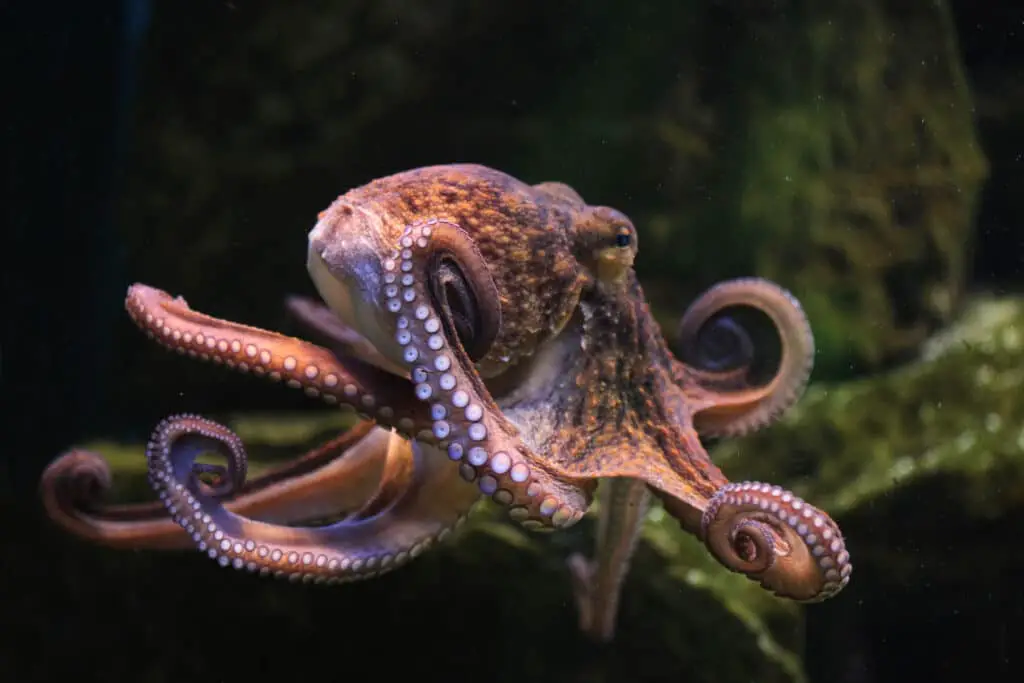
Where is an octopus gills?
An octopus breathes in the same manner that all fish breathe, which is through gills. The octopus gills are located inside the mantle cavity and exit to the outside of the body. The oxygen requirements of octopus are greater than those required by other mollusks and fish.
Octopuses are remarkable marine creatures that, despite their alien-like appearance, have evolved a sophisticated respiratory system suited for their underwater lifestyle. Unlike fish, octopuses don’t have traditional gills, but they do possess specialized structures that facilitate oxygen exchange.
Octopuses have gills located within their mantle cavity, which is a muscular chamber located just behind their head. Within this cavity, two sets of gills can be found on each side. These gills are delicate, feathery structures that serve the same function as the gills in fish, but they are adapted to the unique physiology of octopuses.
Water enters the mantle cavity through an opening called the siphon, which is used not only for respiration but also for jet propulsion. As the octopus contracts its mantle muscles, water is forcefully expelled through the siphon, propelling the animal forward in a burst of speed. This motion also allows fresh oxygen-rich water to continuously flow over the gills, facilitating the exchange of oxygen and carbon dioxide.
The presence of these gills in the mantle cavity is a testament to the incredible adaptations that enable octopuses to thrive in their underwater environments. It’s a reminder of the extraordinary diversity of life in our oceans and the fascinating ways in which organisms have evolved to meet the challenges of their habitats.
Can octopus breathe out of water?
Like fish, octopuses need water to survive, and take in oxygen through their gills. But marine biologist Ken Halanych told Vanity Fair that octopuses can survive for around 20-30 minutes outside the water.
Octopuses are fascinating creatures with a remarkable ability to survive both in and out of water. While they are primarily marine animals, they possess a unique respiratory system that allows them to breathe out of water for short periods of time. Unlike fish, which rely on gills to extract oxygen from water, octopuses have specialized structures called gills that enable them to extract oxygen directly from the air.
When an octopus is in water, it primarily uses its gills to extract oxygen from the dissolved oxygen present in the surrounding aquatic environment. However, if an octopus finds itself out of water, it can still survive for a limited time by absorbing oxygen through its skin. This is possible due to the thin, moist nature of their skin, which allows oxygen to pass through and reach their bloodstream.
It’s important to note that while octopuses can respire out of water to some extent, their ability to do so is limited compared to their aquatic respiration. Prolonged exposure to air can lead to stress and ultimately harm the octopus. Therefore, they typically retreat back to the water as soon as possible to ensure their well-being. This remarkable adaptation showcases the incredible versatility of these intelligent cephalopods in adapting to different environments.
How do the octopus animals breathe?
An octopus filters oxygen out of the water through gills. They do not have lungs and cannot therefore breathe on land. The gills are located on the inside of the mantle. Water enters the mouth and is passed through the gills back into the surrounding water, same way that gills work in fish.
Octopuses employ a unique respiratory system perfectly suited to their underwater habitat. Unlike mammals or birds, they do not possess lungs. Instead, octopuses respire through specialized structures called gills. These gills are located within their mantle cavity, the hollow space in their bodies where vital organs are housed.
As water flows over the gills, dissolved oxygen in the surrounding aquatic environment diffuses into the octopus’s bloodstream. This process allows them to extract the essential oxygen they need to survive. The rhythmic movement of the octopus’s muscular mantle aids in directing water over the gills, ensuring a constant supply of oxygen.
Remarkably, octopuses also have the ability to extract oxygen from the air when necessary. Their skin, particularly around the mantle, is thin and highly vascularized, allowing for gas exchange. When an octopus is out of water, it can absorb oxygen through its skin to sustain itself for short periods.
This dual respiratory capability showcases the adaptability and versatility of octopuses, allowing them to thrive in both aquatic and briefly terrestrial environments. It’s a testament to the intricacies of nature’s design and the remarkable survival strategies evolved by these enigmatic creatures.
What are octopus gills called?
Octopus gills or ctenidia (pronounced ti-knee-dee-uh) are comb-like and feathery looking. There are two of them, one on either side of an octopus’ mantle.
Octopus gills are known as “ctenidia.” These specialized respiratory organs are essential for extracting oxygen from water, allowing octopuses to respire underwater. Ctenidia are located within the mantle cavity, a hollow space in the octopus’s body where crucial organs are situated.
The ctenidia consist of thin, delicate filaments that are richly supplied with blood vessels. As water flows over these filaments, oxygen molecules dissolve in the water and diffuse into the octopus’s circulatory system. Simultaneously, carbon dioxide, a waste product of metabolism, is expelled back into the surrounding water.
This efficient exchange of gases is crucial for the octopus’s survival in its underwater habitat. The rhythmic contractions of the mantle create a flow of water over the ctenidia, ensuring a constant supply of oxygen.
In addition to their underwater respiratory function, octopuses possess a secondary ability to extract oxygen from the air through their thin, vascularized skin when temporarily out of water. This dual respiratory capability showcases the remarkable adaptability of these cephalopods in various environments.
Why do octopus have 3 hearts?
An octopus’s three hearts have slightly different roles. One heart circulates blood around the body, while the other two pump it past the gills, to pick up oxygen.
Octopuses possess three hearts, a distinctive feature that reflects their complex physiology and unique lifestyle. These hearts serve a crucial purpose in supporting their highly evolved circulatory system.
Two of the hearts, known as branchial hearts, are responsible for pumping oxygen-depleted blood to the gills. The gills then facilitate the exchange of oxygen and carbon dioxide with the surrounding water. Once oxygenated, the blood returns to the systemic heart, which pumps it to the rest of the octopus’s body, ensuring all tissues receive the vital oxygen they need.
The three-heart system is an adaptation to the octopus’s demanding environment. Being soft-bodied creatures, octopuses lack a rigid internal skeleton to assist with blood circulation. Their three hearts work in tandem to maintain a consistent flow of oxygenated blood, compensating for this structural limitation.
Moreover, this intricate circulatory system also enables octopuses to be highly agile and efficient hunters. Their unique cardiovascular setup, combined with their exceptional intelligence, contributes to their adaptability in diverse underwater habitats.
Do octopus have gills and lungs?
Octopuses, like other cephalopods, have a unique respiratory system adapted to their underwater existence. They do not have lungs, as lungs are primarily found in terrestrial animals, but they do possess specialized structures known as gills.
Octopuses have gills located within their mantle cavity, which is the hollow space just behind their head. Within this cavity, there are two sets of gills on either side. These gills are composed of thin, feathery filaments that serve the crucial function of extracting oxygen from water and expelling carbon dioxide.
To facilitate respiration, octopuses draw water into their mantle cavity through an opening called the siphon. As the octopus contracts its mantle muscles, water is forcefully expelled through the siphon, propelling the animal forward in a jet-like motion. This process not only helps in respiration but also plays a crucial role in locomotion.
Octopuses rely exclusively on their gills for obtaining oxygen from the surrounding water. This adaptation is well-suited for their life in the ocean, allowing them to efficiently extract oxygen while remaining agile and elusive hunters. Unlike some other aquatic animals that possess both gills and lungs, octopuses are true marine specialists with a highly evolved respiratory system that meets their specific needs beneath the waves.
Are octopus gills efficient at extracting oxygen from water?
The gills of octopuses are remarkably efficient at extracting oxygen from water, showcasing their remarkable adaptation to their aquatic environment. These specialized respiratory organs allow octopuses to thrive in the ocean’s depths where oxygen levels can be significantly lower than at the surface.
Octopus gills are designed with a large surface area and delicate filaments that increase the contact area with water, maximizing the exchange of oxygen and carbon dioxide. As water flows over the gills, dissolved oxygen is absorbed, while carbon dioxide is expelled. This process is made even more efficient by the constant circulation of water within the mantle cavity, facilitated by the octopus’s rhythmic contractions that propel water over the gills.
Moreover, octopuses have the ability to regulate the size of the opening to their mantle cavity, known as the siphon, which controls the rate of water flow and, consequently, the efficiency of oxygen uptake. This adaptability allows them to adjust to changing environmental conditions and varying oxygen concentrations in their surroundings.
Octopuses have evolved a highly efficient and sophisticated respiratory system that ensures they can extract the oxygen they need to support their active and often solitary lifestyle in the challenging underwater world. Their gills exemplify the incredible adaptability of marine organisms to thrive in diverse aquatic habitats.
Can octopuses breathe air like some other aquatic animals?
Octopuses, unlike some other aquatic animals like turtles or amphibians, are not equipped to breathe air. They are obligate water breathers, which means they are entirely reliant on extracting oxygen from water through their specialized gills for respiration.
The absence of the ability to breathe air is a fundamental aspect of octopus biology. Their respiratory system has evolved specifically to function in underwater environments, and they lack the necessary adaptations for breathing air. Attempting to breathe air would be detrimental to their health, as their gills are not equipped to process atmospheric oxygen.
In fact, exposure to air can be life-threatening for octopuses, as it can lead to desiccation (drying out) and damage to their delicate gill tissues. Octopuses are exquisitely adapted to their oceanic habitats, and their unique respiratory system is finely tuned to extract oxygen efficiently from water, enabling them to thrive in diverse marine ecosystems.
So, while some aquatic animals have developed dual respiratory systems that allow them to breathe both air and water, octopuses remain exclusive water breathers, highlighting the remarkable diversity of respiratory adaptations among aquatic creatures.
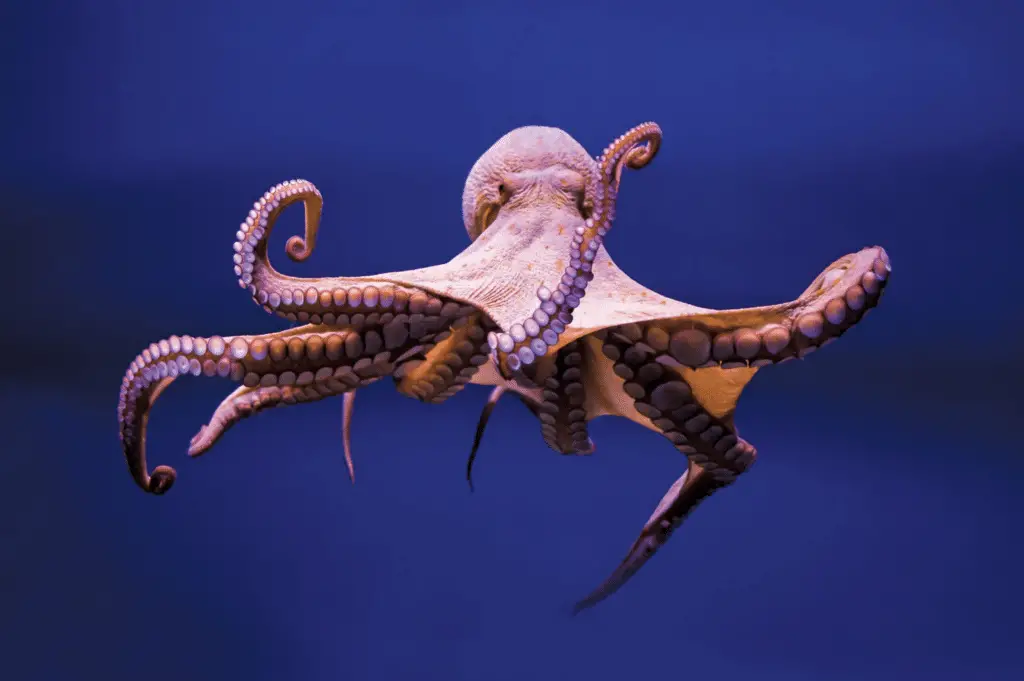
Conclusion
Our exploration into whether octopuses have gills has revealed the fascinating intricacies of these remarkable creatures’ biology and their adaptation to life in the aquatic realm. While octopuses share some similarities with fish in their need for oxygen, they employ a different mechanism for respiration.
Octopuses, being mollusks, do not possess true gills like fish do. Instead, they rely on a highly efficient system of water propulsion and absorption through their skin. Specialized structures called papillae allow them to extract oxygen directly from starfish water, utilizing their muscular mantle to create jet propulsion, which propels water over their papillae-covered skin. This ingenious adaptation not only serves their respiratory needs but also contributes to their exceptional agility and speed, crucial for hunting and avoiding predators.
This unique respiratory system highlights the evolutionary diversity of life in the ocean and showcases the incredible adaptability of cephalopods like octopuses. It reminds us that the underwater world is filled with astonishing creatures, each with its own set of adaptations and survival strategies.
In our quest to understand whether octopuses have gills, we have gained a deeper appreciation for the complexity and beauty of marine life. Octopuses continue to inspire curiosity and wonder, emphasizing the importance of preserving our ocean’s life and their inhabitants for future generations to explore and cherish.


